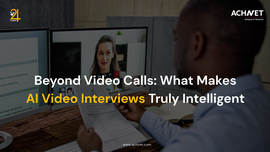Education is the Key to a Better Future, But…
“We Must TEACH Them How to LEARN!”
Becoming a better writer is a never-ending process of self- learning and discovery.
This is my conclusion after reaching 100 Medium posts.
I started to write a piece per week more than a year ago. The reason I do it is simple: I love the opportunity for “self-learning” that an online platform offers. In a fast-changing digital world, it’s essential to continually “test” yourself and reflect on what it is that you are doing.
I am a teacher. So, it is not surprising that “education” is one of the themes that I love to think about. I’ve already written several pieces about how education is disrupted in a digital age. In these pieces, I have mainly focused on the “digital impact” on the content, teaching methods, and the role of educators.
The responses indicate that most of us agree that in an age of “smart machines,” education must change. In particular, “soft-skills” and creativity become extremely important.
Jack Ma (founder of Alibaba), for instance, made it very clear recently during the World Economic Forum that we must teach the next generation to perform the tasks that technology cannot do. He was referring to art, sports, etc. We should focus on building a “skill-set” appropriate for an automated world where humans will “add value” through imagination and vision.
I really believe that education must change. But, I have come to realize that something is missing from this narrative and that there is a more fundamental problem that needs to be addressed first.
We don’t teach our students the capacity to self-study and self-learn.
Too much education today is “proceduralized” and “standardized,” and the inevitable result is that students expect and even demand to be “spoon fed.”
Of course, I understand the upside of having stringent processes and standards in place. We try to guarantee a certain uniform quality. However, the unintended downside is that we have “programmed” students to learn in a predetermined way. In general, everything in teaching focuses on the reproduction of knowledge in a test.
The result? Students want to know which pages of which textbook they must read to succeed. And these pages should directly match the content of the lecture. Otherwise, there are complaints. Most importantly, they want to know what kind of exam questions to expect.
The result? Students want to know which pages of which textbook they must read to succeed. And these pages should directly match the content of the lecture. Otherwise, there are complaints. Most importantly, they want to know what kind of exam questions to expect.
And just to be clear; I don’t blame students for this. It is a natural consequence of how we organize our whole education system.
So, before we can enter Jack Ma’s exciting new world of creativity-oriented education, we need to address this issue. Instead of anchoring teaching in processes and procedures that take all the flexibility out of education, we must focus on helping the next generation how to self-learn.
Or, as I said to one of my colleagues recently:
“We must TEACH them how to LEARN!”
This is particularly important in our digital and fast-changing world where information is readily available, new technologies are amplifying each other, and new and unknown opportunities and challenges emerge at an unprecedented rate.
The 6Cs of “Self-Learning” in a Digital Age
So, how can we “self-learn”?
Here is my matrix of the skills necessary for self-learning in a digital age. These are the capacities that I want my students to cultivate to be prepared for a new style of education and the new world that awaits them.
1 — Collection
Students need to know how to collect the information necessary to deal with the “digital” problems/issues/challenges, at hand. “Navigating” the digital information highway is an important skill. We tend to assume that “digital natives” have this skill. They don’t. Passive use is not the same as active, goal-oriented “collection.”
2 — Consumption
Students need to spend time, “consuming” the diverse content that they have collected. This is an integral part of being successful in a digital age. You often read stories about the importance of reading. Exposure to diverse information feeds curiosity and helps develop better ideas and solutions.
3 — Curation
Students need to be able to filter out (“curate”) relevant information from the multiple sources that they “consume.” Identifying the “right” information is particularly challenging in a world of seemingly infinite information.
4 — Co-Creation
Students must be able to take the “curated” information that they gather and create and (especially) “co-create” new content based on that information. The creation of new content helps build a unique and focused skill set and develop a personalized brand. This is particularly important in the modern workplace where traditional “jobs” are disappearing (or, at least) being transformed (think gig economy), and the idea of “lifetime employment” is a big turn off.
5 — Communication
The “communication” of content is essential in a digital age. The ability to communicate “solutions” in a clear and persuasive way is at a premium in a world where just following the traditional method of operating just won’t cut it. In a world where solutions are not obvious, the ability to persuade others that your answer is “best” becomes crucial.
6 — Correction
Finally, there is the capacity to reflect on and incorporate feedback, and iterate solutions. This final step refers to the ability to adjust and develop (“correct”) constantly. Again, in a fast-changing digital environment, the ability to adapt to new information or circumstances becomes essential.
A Never-Ending Process of Learning
What makes this “Collection-Consumption-Curation-Co-creation-Communication-Correction” model so different from the current curriculum of schools is that it isn’t about instant gratification, the reproduction of knowledge, or measuring “success” by grades in a test.
Instead, it is about appreciating the open-ended (“free”) nature of good self-learning and the life-changing capacities that it offers. Of course, it is more difficult (both for students and educators) but the new possibilities that are created are endless.
Moreover, I don’t think we have much choice given the innovation-driven character of the world that we all now inhabit. We are doing a disservice to the next generation if we don’t adapt education to the new world.
inally, the model described here teaches students how to be patient and persistent. I really believe that perseverance (along with the related ability to continually adapt to a changing environment) are the critical qualities that we need to remain relevant in a digital world in which we (“humans”) are expected to add value via the ability to be innovative and creative.
This Article originally appeared here.

.jpg)



